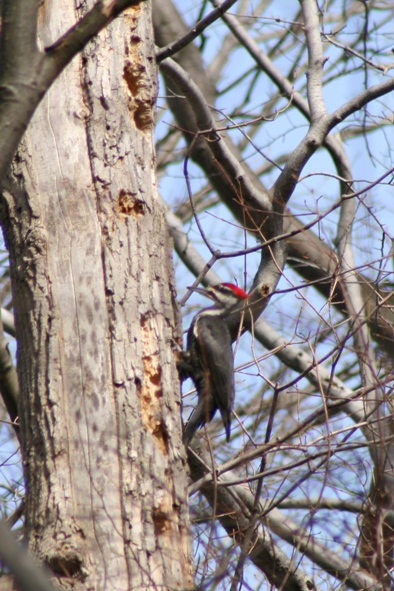Snags
While most wildlife get the things they need from living trees, there are still a large number of animals that rely heavily on dead trees. In nature there are always trees that come to the end of their lives, and they continue to provide food and shelter long after they have stopped living. Trees are fantastic in that way. In a living tree, most of the wood is unavailable for other organisms, while in dead trees it becomes a relatively good source of food for wildlife. Of course, it is true that a dead tree is more likely to topple than a living tree. If you think that a tree could come down on your house, you may still be able to save wildlife (and your money) by only cutting down part of the tree. Unfortunately, humans have gotten into the habit of just removing dead trees without any consideration given to the environmental impact. Removing dead trees lowers the density of bird populations.
Snags help wildlife in the following ways:
 1) They are a source of food for many insects and other invertebrates. The tunnels made by beetle larvae provide nesting sites for many solitary bees.
1) They are a source of food for many insects and other invertebrates. The tunnels made by beetle larvae provide nesting sites for many solitary bees.
2) The insects in these trees are a source of food for many birds. If you leave a tree to decay naturally in your garden you may well be rewarded with the appearance of a pileated woodpecker. These birds are one of the most impressive in North America.
3) Woodpeckers excavate holes in these trees for nesting. When they leave (and they only tend to use a hole once), the holes get used by other birds, racoons, flying squirrels and bats. The holes provide nesting sites and winter roosting sites to avoid inclement weather. The importance of these holes for the survival and propagation of bird populations should not be underestimated.
4) Several birds of prey use snags for perching as do many smaller birds.
5) As the snag continues to rot, it will be used by amphibians and smaller mammals.



